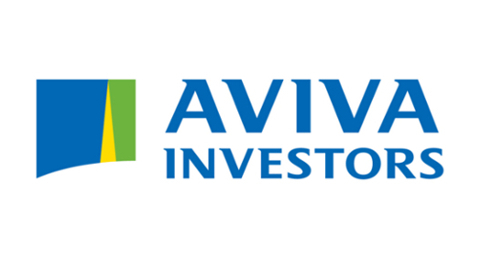
In 1973 economist Burton Malkiel, a Princeton University professor, claimed that "a blindfolded monkey throwing darts at the stock listings" could do as well as an investment professional.
I am terrible at darts, so I can say with a high degree of certainty that a blindfolded monkey would give me a good thrashing. But is there any merit in the statement that a completely random approach to stock picking would deliver a better outcome than an analyst poring over company reports?
Inconveniently, there is an element of truth in Malkiel's controversial comment. A 2018 study by S&P Dow Jones Indices showed that most active stock managers failed to beat their benchmark targets over the previous one-year, five-year,10-year and 15-year periods; a key driver of their inability to consistently outperform the benchmark over the longer term was fees.
% of large-cap funds that underperformed the S&P 500
Passive strategies on the other hand have performed very well. Unsurprisingly, they have gained popularity and viewed by some as the paragon investment solution. Broadridge studies show a 54.29% rise in global passive strategies (index linked and ETFs) from 2016 to 2019. However, can we rely solely on ‘cheap as chips' solutions? After all, when it's cheap as chips, you just get chips. You don't get steak and chips.
Source: S&P Dow Jones Indices. Data as 31 December 2018
Past performance is not an indicator of future returns.
As time goes on the likelihood of the next global recession increases
It is important to understand why passive strategies have performed so well in recent years. Since the Global Financial Crisis, the G4 central banks pumped a staggering $12 trillion into global markets; quadrupling their balance sheets.
This extraordinary stimulus has artificially boosted all asset prices, for both good and bad companies, creating the perfect environment for passive strategies to thrive. In contrast this has been a difficult environment for active management, which requires market participants to act on fundamentals rather than being influenced by the sugar rush of liquidity.
However, it feels like we're approaching the end of the economic cycle. Our view is that there's approximately a one-in-three chance of a global recession over the next 18 months. In more volatile and challenging conditions there will be more dispersion between winners and losers again, presenting a more fertile environment for active management to have the potential to deliver outperformance.
Blending passive and active strategies for the best outcome
We believe that relying wholly on either active or passive strategies is unlikely to deliver the best outcome for clients, which is why we think carefully about how we build funds.
For example, we prefer to take a passive approach when allocating to US equity. The market is highly informationally efficient and liquid, making it incredibly difficult for active fund managers to beat the market.
However, it makes sense to be more active when accessing asset classes which have fewer analysts following them and more security-specific risks to be avoided. Global high yield and emerging markets smaller companies are good examples.
The active versus passive debate is usually couched as binary. However, they are not mutually exclusive. Rather than being beholden to just one type of strategy, a blended approach makes sense. And back to that blindfolded monkey: rather than just splitting active and passive management thoughtlessly down the middle, investors should be pragmatic and think carefully about where they feel each serves best.
Important Information
Except where stated as otherwise, the source of all information is Aviva Investors Global Services Limited ("Aviva Investors"). Unless stated otherwise any opinions expressed are those of Aviva Investors. They should not be viewed as indicating any guarantee of return from an investment managed by Aviva Investors nor as advice of any nature.
The value of an investment and any income from it can go down as well as up. Investors may not get back the original amount invested.
The Aviva Investors Multi‐asset Funds comprise two ranges, each with five funds (together the "Funds"): Aviva Investors Multi-asset Plus Fund range comprises the Aviva Investors Multi‐ asset Plus Fund I ("MAF Plus I"), the Aviva Investors Multi‐asset Fund Plus II ("MAF Plus II"), the Aviva Investors Multi‐asset Plus Fund III ("MAF Plus III"), the Aviva Investors Multi‐asset Plus Fund IV ("MAF Plus IV") and the Aviva Investors Multi‐asset Plus Fund V ("MAF Plus V"). Aviva Investors Multi-asset Core Fund range comprises the Aviva Investors Multi‐ asset Core Fund I ("MAF Core I"), the Aviva Investors Multi‐asset Fund Core II ("MAF Core II"), the Aviva Investors Multi‐asset Core Fund III ("MAF Core III"), the Aviva Investors Multi‐asset Core Fund IV ("MAF Core IV") and the Aviva Investors Multi‐asset Core Fund V ("MAF Core V").
The Funds are sub‐funds of the Aviva Investors Portfolio Funds ICVC. For further information please read the latest Key Investor Information Document and Supplementary Information Document. The Prospectus and the annual and interim reports are also available on request. Copies in English can be obtained free of charge from Aviva Investors UK Fund Services Limited, St Helen's, 1 Undershaft, London EC3P 3DQ. You can also download copies from our website.
Issued by Aviva Investors UK Fund Services Limited. Registered in England No 1973412. Authorised and regulated by the Financial Conduct Authority. Firm Reference No. 119310. Registered address: St. Helen's, 1 Undershaft, London, EC3P 3DQ. An Aviva company. 184850 - 12/04/2022













